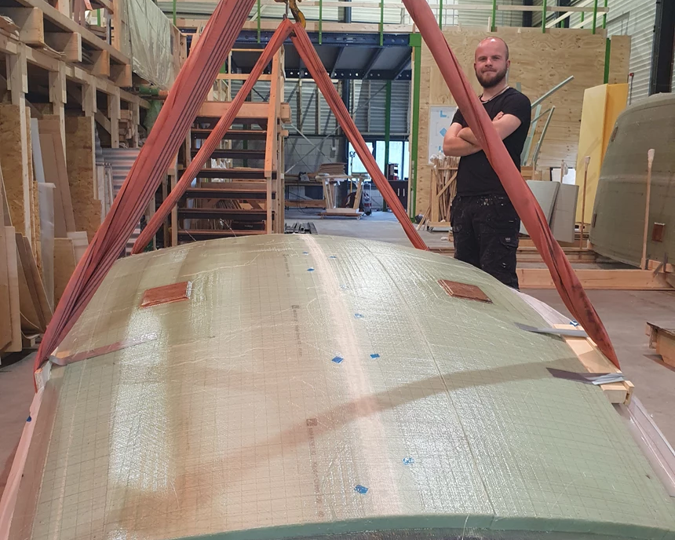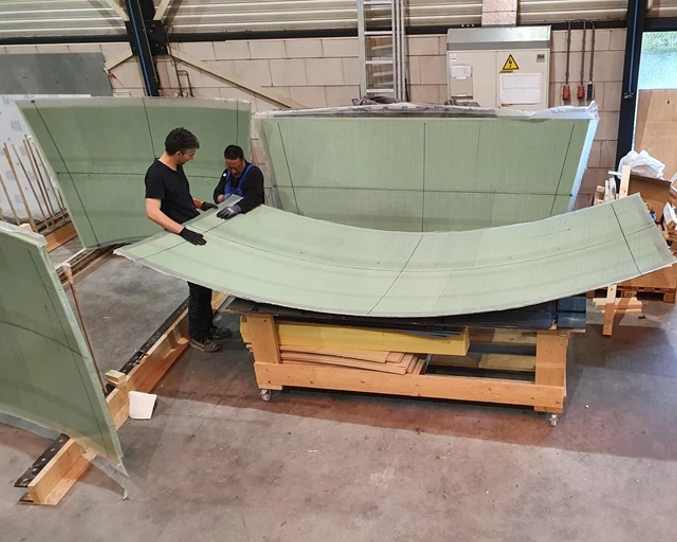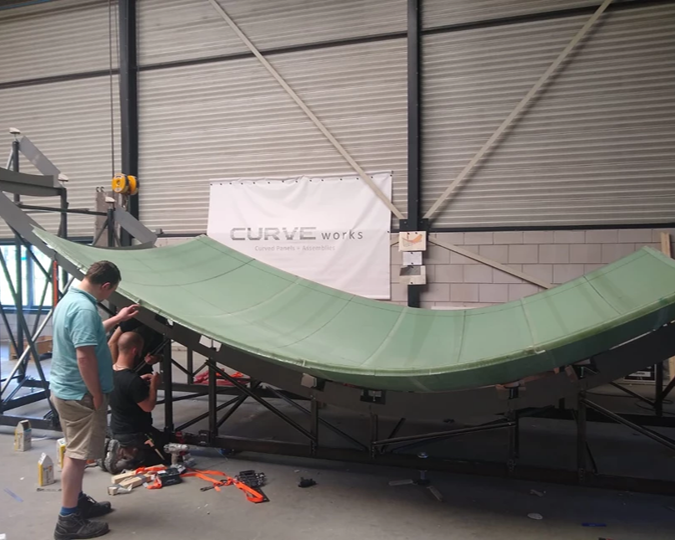Adapa enables reduction of material use, lead-time and cost for the marine industry
Curve Works reaches milestone for modular builds of composite shell structures.
Approach reduces cost by 40%, lead-time by 50% and material use by >70% compared to manufacturing in large, one-off mold.
Article on Compositesworld.com June 11th 2021
In its mission to manufacture large composite structures without the waste from tooling, Curve Works (Alphen aan den Rijn, Netherlands) has been pushing forward composite panel assembly forward for increased sustainability. As the name suggests, the panel assembly approach assembles the structure from panels rather than using a large mold.
Robotic moulds for manufacture of curved surfaces
REDUCE WASTE AND UPSCALE YOUR PRODUCTION VOLUME TO GAIN COMPETITIVE ADVANTAGE
“The goal is to reduce the cost, lead-time and waste of one-off molds and molding tools.
To demonstrate this approach, Curve Works has manufactured a series of unique, doubly-curved composite sandwich panels using its automated adaptive mold. The panels, sized up to 4 x 1.6 meters, were assembled on a metal-frame jig and bonded together using Curve Works’ proprietary technology. The result is an airtight structure 10 meters long, 4 meters wide and 3 meters tall.
Materials were also chosen for sustainability, including Kerdyn Green PET structural foam and Ampro BIO epoxy resin, both supplied by Gurit (Wattwil, Switzerland).
The whole process from panel production to structural assembly took only 14 working days. “It’s a major milestone for us to demonstrate such cost-effective and sustainable, modular building,” says Tahira Ahmed, co-founder of Curve Works. “Compared to manufacturing using a large mold, our figures show that we can reduce cost by 40%, lead-time by 50% and, importantly, material use by at least 70%.”
“The panel assembly approach, together with adaptive mold technology, allows Curve Works to be very flexible in both shape and size of the final parts,” says Ahmed. “We have a production technology here that allows us to go as large as the customer needs without the costs and tooling waste increasing exponentially as well.”
Photos by courtesy of CurveWorks.nl

1) Curved composite panel production on an adaptive mould 
2) A cured composite panel is lifted from the adaptive mould 
3) Cured composite panels are prepared for assembly 

4) Prepared panels are assembled on a simple steel-frame jig
5) Panel assembly on steel jig 
6) Final double curved composite structure takies shape 
7) Final airtight structure on a metal-frame jig 10 meters long, 4 meters wide and 3 meters tall


